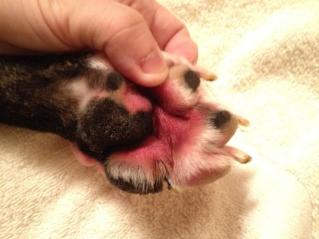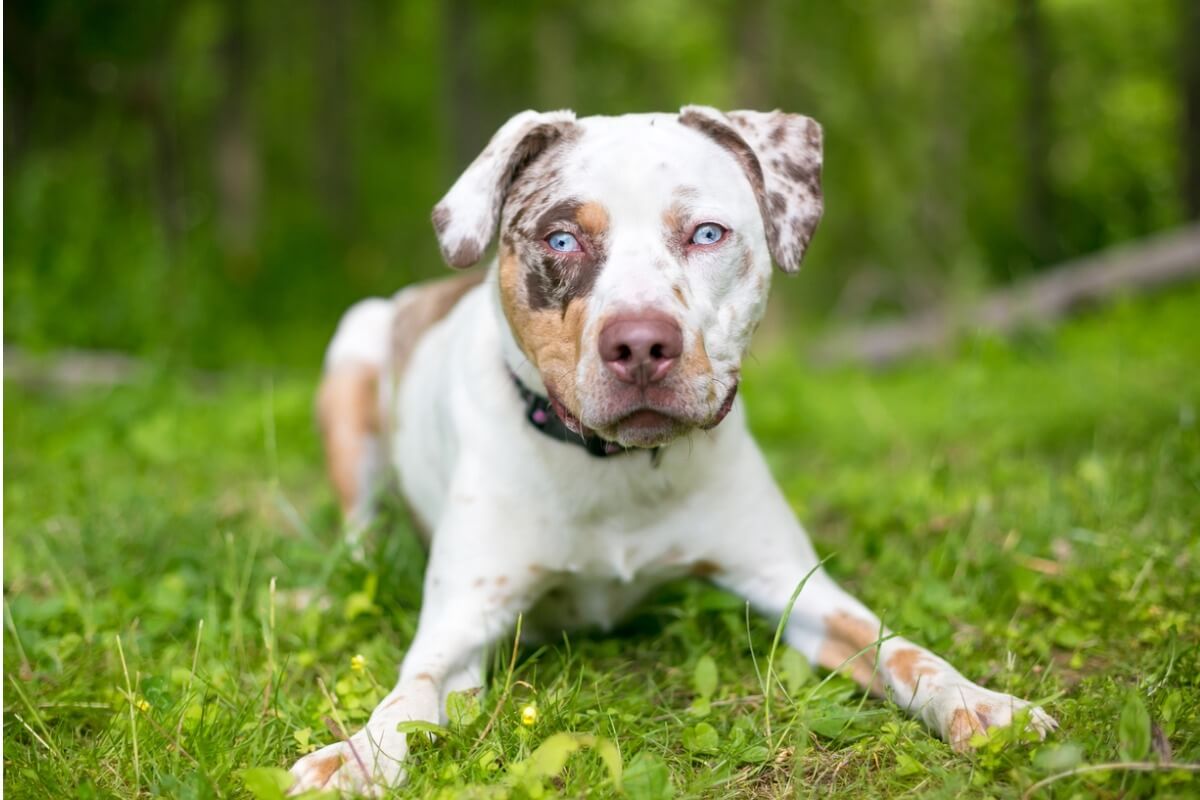Red Paws in Dogs: Causes and Treatment

Healthy paws are necessary for overall health in canines. For your dog, going for a walk and exploring a territory is an essential part of their routine. That’s why checking their paws should be an essential weekly job. Red paws in dogs can cause them great problems walking.
In this article, we’ll tell you all about the causes of red paws in dogs, and what you should do about it. Before taking your dog to the vet for a check-up, it’s advisable to wash the red paws with a neutral dog shampoo.
Irritants
The dog’s paws may have come into contact with irritants such as weeds or chemicals such as pesticides. If they have been in contact with plants such as nettles, it would be rare for them to chew on them. However, other plants such as flamingo flower (also called anthurium), if chewed by the animal, can also redden the mouth. There are many dangerous plants for dogs to look out for.
Some may be harmless, but having pesticides in their composition makes them highly toxic to your pet.
Treatment for red paws from irritants
After a checkup, the veterinarian will determine what type of irritant is to blame and may administer antihistamines and anti-inflammatories for the dog. The anti-inflammatory will be one specifically for them, and you shouldn’t give your dog ibuprofen.
Fungus
A fungal infection hurts the soft area of the dog’s paws. In addition to the redness, you’ll notice that your dog chews and licks itself insistently and at all hours.
The best-known infection is ringworm or candidiasis, which is caused by three types of fungi called microsporum, trichophyton, and epidermophyton. Dogs and cats can infect each other, and even people. In addition to the red paws, circular lesions can be seen where alopecia has occurred on the body of the animal.
Treatment for red fungal paws
The veterinarian may prescribe a topical fungicidal treatment with powders, lotions, or ointments according to the degree to which the fungus has advanced. If it’s a severe case, they may prescribe a systemic antifungal.
Parasites
If your dog, in addition to licking and chewing a wound on their paw, has other symptoms such as diarrhea, then it may be parasites. Hookworms are small organisms that lodge in the intestine. They can enter the animal through a wound in a leg; sometimes a lump can also be seen on the leg.
Treatment for red paws due to hookworm
Treatment consists of deworming the dog with anthelmintic drugs. A cure of the paws will be performed while deworming.
Food allergy
Your dog may be allergic to certain foods in its diet, such as cereals or chicken protein. These allergies manifest themselves with irritated skin on other parts of the body in addition to the paws, such as their ears, eyes, muzzle, and lips. The dog will show that it’s very itchy, and it may also suffer from sudden vomiting and diarrhea.
Treatment for red paws due to food allergy
Once diagnosed by the veterinarian, a diet can be prescribed to your pet. Usually, a restriction of proteins and commercial foods is recommended until the one causing the reaction is found.
Burns
The dog has pads that protect its limbs, but don’t forget that, basically, they’re going around barefoot. In both winter and summer, their pads can suffer from burns due to exposure to extreme temperatures.
The animal will show some discomfort when walking and may even refuse to move at all when in pain. Preventive treatment will avoid reddening the pads. After each walk, a lubricating ointment can be applied to the paws to keep them in good condition.
Treatment for red paws due to burns
It’s best to clean the wound with veterinary iodine gel or spray and then apply a healing ointment. There are gels for burns in veterinary clinics that the veterinarian can prescribe if necessary.

Pododermatitis
Red paws in dogs may be due to dermatitis caused by allergy to fleas, parasites, mites, etc. Some breeds of dogs such as retrievers, Newfoundlands and Rottweilers are more prone to dermatitis that also affects their pads. Pododermatitis itself can be a symptom of endocrine problems or immune system malfunction.
Treatment for red paws due to pododermatitis
Pododermatitis usually subsides on its own. However, if it’s diagnosed and the dermatitis worsens, then immunosuppressive doses of corticosteroids and topical treatments are administered to keep the reddened area under control.

As you can see, it’s well worth inspecting your dog’s paws in order to prevent future diseases or detect present ones that may be developing, in addition to taking care of the walks that strengthen the bond and the health of both you and your pet.